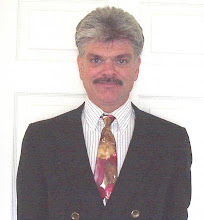If you know me you know I admire Nikola Tesla as the world's greatest engineer on a par with or perhaps even surpassing DaVinci. Although Tesla pioneered numerous electromagnetic related fields he did not abandon the seemingly less sophisticated area of electrostatics. An example of this that I will draw on is his Death-Ray, which he proposed to build to defeat Nazi Germany during WWII and which used electrostatics to propel it's projectiles. (I plan to discuss Richard Fenyman's important and almost incredible comments on the awesome power of electrostatics in relation to the moon and the A-bomb in a future posting.)
Huge successes in the field of electrical engineering with electrodynamics, i.e. radio, cell phones, radar, integrated circuits, are ongoing, but has that resulted in science and industry overlooking the important area of electrostatics? In the sky-is-the-limit spirit of Tesla, hopefully, I would like to propose a new use of an electrostatic device for capturing the energy of lightning - the humble capacitor. My idea to capture lightning is surely not original but what is perhaps novel is the application of Tesla's Death-Ray design to lightning capture.
Lightning occurs when the voltage between a cloud and the earth (or another cloud) exceeds the breakdown limit of air which normally acts as an insulator. Flourescent lights, invented by Tesla, (even though General Electric on their website claims to have invented them in the 1940s), use this effect. When the voltage per foot exceeds the breakdown limit the electrons in air molecules break away and become conductive in a cascading manner. Huge currents result. One way to capture this energy would be to inductively couple the current into a superconducting coil via a huge transformer. However, this is not currently feasible (pun not intended) because superconductivity breaks down as the density of current rises in the superconductor and disappears well before the level of current needed for lightning capture is achieved.
Alternatively, the electric charge from lightning could be captured and made to come to rest before reaching the ground, possibly. The "Lightning Capacitor" would require two parallel circular plates, large enough to disperse the charge and allow it to spread out, being perhaps an acre in size. It should have a lightning rod attached to the top plate in the center. Techniques for inducing atmpspheric conductance to encourage lightning to strike could be employed directly above the plate such as shining UV light upwards, as was done by Tesla at Wardencliffe on his Magnifying Transmitter.
The bottom plate should connect to a large number of copper "roots" spreading out underground in all directions and embedded in wet, conductive, earth to allow the vast inrush of opposite charge to the bottom plate, thus instantly capturing and confining the electric field.
The sides of the capacitor present an engineering challenge because they need to provide physical support for the top plate without providing a conductive path.
The most important consideration is preventing the lightning from simply charging the top plate up to an enormous potential then creating another discharge to the ground - in effect bouncing off or punching through the capacitor. To prevent punch through, the capacitor should contain nothing between the plates, in effect a vacuum. Any air molecules would instantly ionize and conduct. Most common dielectric materials would surely(?) breakdown as does air at these tremendous lightning voltages. To prevent the lightning from bouncing, it would be desireable to extend the vacuum around all sides of the top plate for many meters. The design crux is how to support the top plate physically without creating a discharge path.
This is where Tesla's Death Ray may hold a clue: Tesla used the Bernouli effect of a vacuum created by moving air to support large electrostatic potentials. So following his design would suggest making each of the top plate and the bottom plate into two parallel plates and pumping air between them from their centers horizontally outward at such speeds that a sufficient vacuum can be achieved. The airflow required would be much greater than Tesla needed since only the Death-Ray gun nozzle needed to be surrounded in vacuum. With the lightning capacitor, the entire circumference of a one acre disk needs to be vacuum sealed!
Another shape for the Lightning Capacitor could be a sphere. The sphere would consist mostly of an insulating dielectric able to withstand extremely high potentials. At the top and bottom of the sphere would be the two plates to hold the charge. The plates would have to be small in relation to the size of the sphere so that the huge electrostatic field would exist mostly between the plates and as the sphere walls close in on each other away from the plates so too does the electrostatic field intensity drop. A vacuum would still be required inside the entire sphere. If the plates were an acre is size, the sphere might have a radius of about one mile - a bit beyond reach of todays engineering and surely unfundable.
An alternative approach is to capture the electrostatic potential of a cloud before the lightning occurs, and at the same time obtain water and the potential energy of the water in the cloud, which I plan to discuss in a future post on "Cloud Harvesting".
Friday, July 24, 2009
Subscribe to:
Posts (Atom)
